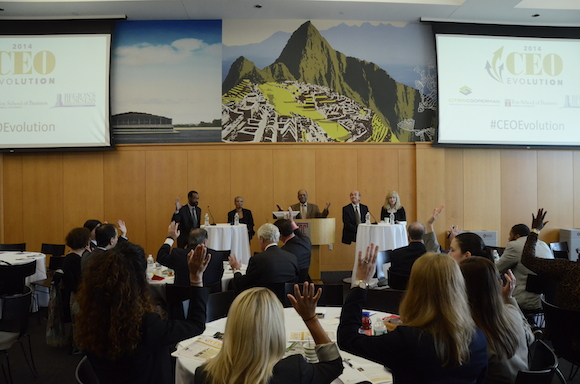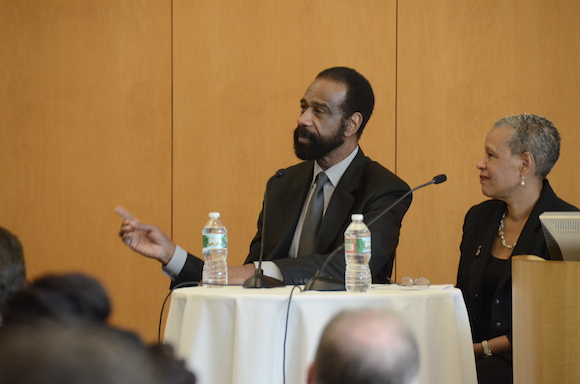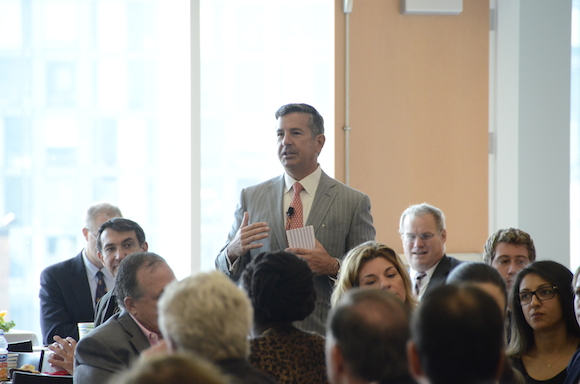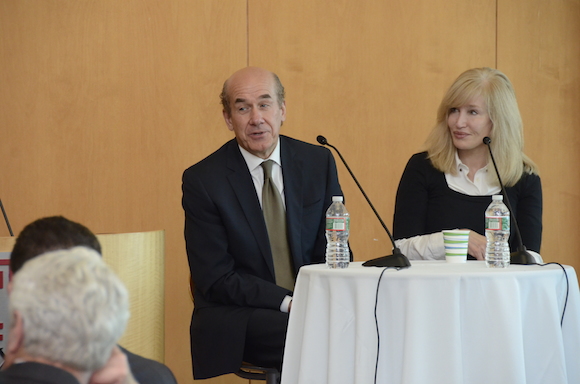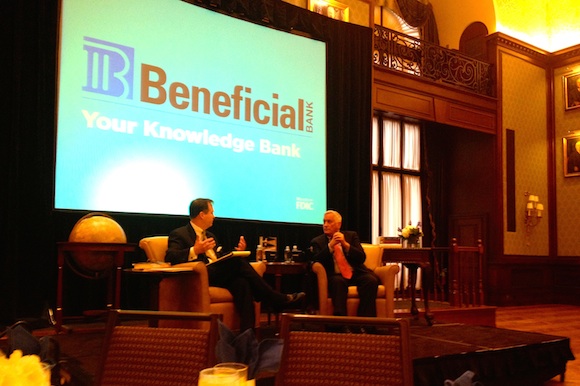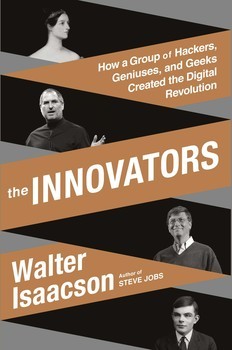Former Philadelphia Phillies center fielder Garry Maddox knows a thing or two about teamwork. So do his fellow CEOs, Donna Allie, Nancy Glass and Tom Scannapieco. Best selling author Walter Isaacson has a few words to say on the subject, too: “Teamwork is important because we don’t often focus on how central that skill is to innovation,” he writes in his just-released book The Innovators.
In a welcome moment of convergence, all five were in Philadelphia last week to muse on success and the sometimes-mysterious alchemy that can either insure or doom achievement, to say nothing of business profitability.
In a nod to the audience gathered for a talk sponsored by Beneficial Bank at the Union League of Philadelphia, Isaacson noted, “Benjamin Franklin was the quintessential innovator. He was also the type of person who could bring people together… If you really study innovation and creativity, it comes from teamwork, and nobody did that better than Dr. Franklin.”
Meanwhile, Maddox spoke with the other CEOs at “CEO Evolution,” hosted by Citrin Cooperman at Temple University’s Fox School of Business. The baseball legend left the playing field for a successful business career heading the city's A. Pomerantz & Company — his credo is to”“always have people around me that are smarter than me.”
Mark Carrow, managing partner of the accounting firm's Philadelphia office, noted that successful businesspeople can take the form of leaders, communicators, fact gatherers or advice seekers. Isaacson adds pioneers, hackers, inventors and entrepreneurs to the mix. A little sales schmooze is good, too.
Genius alone isn’t enough, stressed Isaacson.
“Vision without execution is just pure hallucination,” he said. “And execution is a team sport.”
Many of the brilliant minds he profiles in the book — all of whom contributed in some way to the digital revolution — collaborated in pursuit of greatness. Think Steve Jobs and Steve Wozniak or Bill Gates and Paul Allen.
Risk taking is another common denominator. Scannapieco, president and CEO of New Hope's Scannapieco Development Corporation, has developed a niche in the “ultra luxury” real estate market, building Center City Philadelphia condominiums priced between $4 and $16 million. His research indicated that the prospective market was tiny — only 1,800 households in the region — but that he only needed two percent of that market to succeed.
Other real estate developers typically offer a range of unit sizes — from studio to penthouses — in luxury buildings. But Scannapieco built his successful 1706 Rittenhouse with only full-floor units (complete with a high-tech automated parking system) and he's about to break ground on a similar building at 5th and Walnut Streets in the city's posh Society Hill neighborhood. Calculated risks come easy, said Scannapieco, who started his real estate career with a shell in the once-blighted Art Museum neighborhood.
“I became an urban pioneer and grew a business from that,” he recalled.
For Nancy Glass of Bryn Mawr’s Nancy Glass Productions, a driving force is the realization that, as she puts it, “TV as we know it is dead.” To stay on top of the highly competitive and constantly changing world of television production — and to overcome the perceived disadvantage of being located in Pennsylvania, not New York or Los Angeles — Glass' company is constantly pitching, “offering things are that unique.”
Glass and Donna Allie of Philadelphia’s Team Clean both founded businesses to support their families. With success has come a larger mission. Allie says her current motivation is to grow her business and create jobs. Glass is committed to keeping production in Pennsylvania no matter how far-flung her company’s shooting locations on shows such as Tanked and Dangerous Grounds.
The question of why — or why not — to choose Pennsylvania also came up with Isaacson. ENIAC, built at the University of Pennsylvania and completed in 1945, is widely considered the first modern computer. (It was the size of a room.) So why did Southeastern Pennsylvania miss the chance to become Silicon Valley?
Isaacson attributes it to a confluence of circumstances. The defense industry and its brilliant young engineers — ENIAC’s original purpose was to calculate missile trajectories — were heavily concentrated in California.
And it didn’t help that East Coast universities viewed “computer science as too utilitarian to be an academic subject,” he explained. Locations near Stanford in Palo Alto were only too happy to capitalize on the regional snobbery that perceived computers as a mere tool. A few decades later, the cultural environment in the Bay Area — a mash up of hippies, activists and geeky engineers — was the ideal breeding ground for next-generation visionaries like Jobs who grasped the potential for personal computing.
But according to Isaacson, the Philadelphia region is well poised to seize the next wave of the digital revolution. Its strength in biotech and life sciences is a significant factor.
And the region has other strengths: While the first half of the revolution was engineer driven; artists, designers and other original thinkers will drive the second, he predicted.
“And a mix of creative people is a fertile stew for innovation,” he said.
ELISE VIDER is news editor of Keystone Edge.
